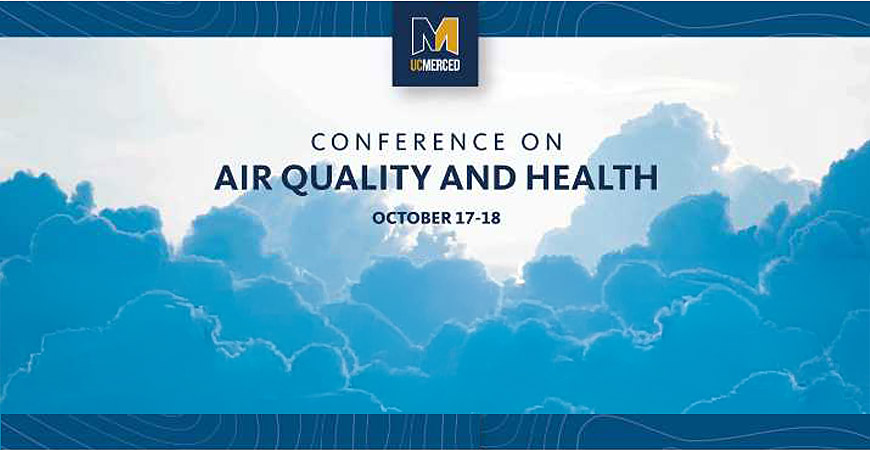
Scientists, policymakers and concerned community members will gather at UC Merced this week to compare notes and chart new directions to improve air quality and public health in the San Joaquin Valley.
The Conference on Air Quality and Health on Thursday and Friday, Oct. 17-18, at the UC Merced Conference Centers is sponsored by the university’s Health Sciences Research Institute and Department of Public Health. Presentations and discussions will address the pervasive problem of poor air quality in the Valley basin, emphasizing its effects on health in disadvantaged communities.
“The goal is to bring folks together from across the region to discuss what research is going on, what is needed and how to move ahead on solutions,” said public health Professor Asa Bradman, who leads UC Merced’s San Joaquin Valley Center for Air Injustice Reduction. “There has been an increase in air quality research in the Valley and we hope to make sure researchers are talking to each other.”
The conference will feature dozens of presentations about state-of-the-art air quality research. Represented agencies will include the San Joaquin Valley Air Pollution Control District, the California Air Resources Board and the state’s Office of Environmental Health Hazard Assessment. Local health departments and community groups also will attend.
The San Joaquin Valley suffers from some of the nation’s worst air quality, due largely to a combination of geography and human factors. The main air quality problems are:
-
Fine particulates, mostly from vehicle emissions, agricultural burning, industrial waste and dust. Referred to as PM2.5, these particles can infiltrate the lungs and even enter the bloodstream. Exposure can lead to asthma and respiratory infections.
-
Ground-level ozone, created when pollutants from vehicles, along with agricultural and industrial sources, react with sunlight. Ozone can irritate the respiratory system, exacerbate asthma and cause chronic lung damage. Children are especially vulnerable as they are more likely to spend time outdoors.
-
Nitrogen dioxide, also sourced from vehicles and industry, is a component of smog and can lead to ozone formation. NO2’s respiratory effects are similar to those of ozone.
Low-income and minority communities are more acutely affected by poor air quality because of higher levels of exposure, lower access to quality health care and reduced influence in local and regional policy decisions.
Efforts to improve conditions in these communities are funded partially by 2017 state legislation that requires increased air-monitoring data, the creation of local emission reduction plans, and accelerated reduction of industrial pollutants. Presentations at the conference will address these challenges.




 Public Information Officer
Public Information Officer

